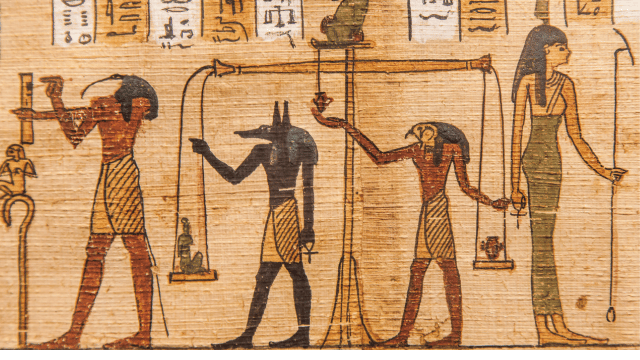Welcome to this in-depth exploration of “The Flower of Veneration” in Chapter 1. As an avid reader and literary enthusiast, I have always been captivated by the power of symbolism and the profound impact it can have on a work of literature. In this article, we will delve into the beautiful world created by the author and uncover the hidden meanings behind “The Flower of Veneration.” Join me on this journey of discovery as we unravel the enchanting beauty found within the pages of Chapter 1.
Symbolism and Significance of “The Flower of Veneration”
Throughout the book, “The Flower of Veneration” is a powerful emblem of respect and devotion. It represents the deeply rooted customs and cultural values of the author’s made-up universe. The flower’s delicate petals represent grace and purity, while its vivid colors capture the life and vitality of the characters’ emotions. Through the use of this symbolic flower in the story, the author asks readers to consider issues of respect, devotion, and the intricacies of interpersonal relationships.
Beyond its metaphorical meaning, “The Flower of Veneration” has deeper importance. It serves as a literary technique that advances the plot and gives the characters something to focus on. The protagonists’ journey for self-awareness and comprehension is enabled by their pursuit of the flower.
Analysis of Chapter 1: Themes and Motifs
Key concepts and motifs that will be explored throughout the tale are introduced in Chapter 1, which also sets the scene for the entire book. A key subject that emerges is the conflict between modernity and tradition. The first chapter’s characters are torn between what society expects of them and what they really want—personal independence. As the individuals struggle to fulfill their cultural and societal obligations while navigating the complexities of their relationships, this tension provides a dynamic backdrop for the drama to emerge.
The investigation of identity is a key theme in Chapter 1. The characters must struggle to define who they are in a culture that frequently sets expectations on them. Through their exchanges and reflections, they set out on a mission of self-exploration, asking
The author skillfully weaves these themes and motifs into the fabric of Chapter 1, creating a captivating narrative that engages readers on multiple levels. As we delve deeper into the subsequent chapters, we will witness the further development and exploration of these themes, providing a rich and thought-provoking reading experience.
Literary Devices Used in Chapter 1
In Chapter 1, the author employs a variety of literary devices to enhance the storytelling and create a rich narrative experience. One notable device is the use of vivid imagery. Through detailed descriptions and sensory language, the author paints a vivid picture of the world in which the characters live. This imagery allows readers to immerse themselves in the story, evoking a strong emotional response and deepening their engagement with the narrative.
Another literary device utilized in Chapter 1 is foreshadowing. The author strategically plants hints and clues throughout the chapter, subtly alluding to events and developments that will occur later in the novel. This technique creates a sense of anticipation and intrigue, compelling readers to continue reading in order to uncover the full extent of the foreshadowed events.
Additionally, the author employs dialogue to reveal character traits and motivations. Through carefully crafted conversations, readers gain insight into the characters’ thoughts and emotions, deepening their understanding and connection to the story. The use of dialogue adds depth and authenticity to the narrative, allowing readers to become fully immersed in the lives and experiences of the characters.
Historical and Cultural Context of “The Flower of Veneration”
To truly appreciate the beauty and depth of “The Flower of Veneration,” it is essential to understand the historical and cultural context in which the novel is set. The author draws inspiration from a rich tapestry of traditions, customs, and beliefs, weaving them seamlessly into the narrative. By grounding the story in this historical and cultural context, the author creates a sense of authenticity and realism, allowing readers to fully immerse themselves in the world of the novel.
The historical context of “The Flower of Veneration” is characterized by a period of societal change and upheaval. The characters find themselves navigating a shifting landscape, where long-held traditions clash with emerging ideologies. This backdrop of social transformation adds depth and complexity to the narrative, reflecting the challenges faced by individuals in times of change.
Culturally, “The Flower of Veneration” explores themes of honor, duty, and the importance of family ties. These values are deeply ingrained in the characters’ lives and shape their choices and actions. By delving into these cultural nuances, the author invites readers to reflect on their own cultural backgrounds and consider the universal nature of these themes.
Influences on the Writing of “The Flower of Veneration”
Every writer is influenced by a myriad of factors, and “The Flower of Veneration” is no exception. The author draws inspiration from a diverse range of sources, blending them together to create a unique and compelling narrative.
One notable influence on the writing of “The Flower of Veneration” is the author’s own personal experiences and observations. By drawing from their own life journey, the author infuses the story with authenticity and depth, allowing readers to connect with the characters on a deeper level. The author’s unique perspective adds richness to the narrative, providing a fresh and captivating reading experience.
In addition to personal influences, the author is also influenced by the literary traditions and works that have come before. By studying and engaging with the works of other writers, the author has honed their craft and developed a unique voice. This blend of personal experiences and literary influences creates a compelling narrative that resonates with readers.
The Reception and Impact of “The Flower of Veneration”
Since its publication, “The Flower of Veneration” has garnered critical acclaim and captured the hearts of readers around the world. Its enchanting beauty and thought-provoking themes have sparked discussions and debates, making it a significant contribution to the literary landscape.
Readers and critics alike have been captivated by the depth and complexity of the characters, the lyrical prose, and the evocative imagery. The novel has been praised for its ability to transport readers to a different time and place, immersing them in a world filled with beauty, passion, and intrigue.
The impact of “The Flower of Veneration” extends beyond its literary merits. It has inspired countless adaptations, including film and stage adaptations, further expanding its reach and influence. The novel’s enduring popularity is a testament to its timeless themes and universal appeal.
Exploring the Characters in Chapter 1
Chapter 1 introduces readers to a rich cast of characters, each with their own unique motivations, desires, and conflicts. These characters serve as the driving force behind the narrative, propelling the story forward and engaging readers on an emotional level.
One of the central characters in Chapter 1 whose journey of self-discovery and personal growth forms the backbone of the narrative. Through their experiences and interactions with other characters, we witness the complexities of their relationships and the challenges they face in navigating their societal and cultural expectations.
Another notable character in Chapter 1 whose contrasting beliefs and values provide a source of conflict and tension within the narrative. As the story unfolds, we are drawn into their world, witnessing the clashes and resolutions that shape their journey.
Chapter 1 in Comparison to Other Chapters in the Novel
While Chapter 1 serves as the foundation for the entire novel, it is also important to examine its place within the larger narrative structure. As the opening chapter, it sets the tone and introduces key themes and characters, laying the groundwork for the unfolding story.
In comparison to other chapters in the novel, Chapter 1 acts as a microcosm of the larger narrative. It encapsulates the central conflicts and introduces the core themes that will be explored in greater depth in subsequent chapters. By analyzing Chapter 1 in relation to the rest of the novel, readers gain a deeper understanding of the overarching story and the character arcs that will unfold.
Conclusion:
In conclusion, “The Flower of Veneration” in Chapter 1 is a captivating introduction to a world filled with beauty, symbolism, and profound themes. Through its exploration of symbolism, themes, literary devices, historical and cultural context, and character development, the novel leaves a lasting impact on readers.
“The Flower of Veneration” has become a beloved work of literature, cherished for its ability to transport readers to a different time and place. Its enchanting beauty and thought-provoking themes continue to resonate with readers, inspiring discussions and reflections on the complexities of human relationships, the pursuit of identity, and the clash between tradition and modernity.
As we journey through the subsequent chapters, we will further uncover the layers of meaning and beauty that lie within “The Flower of Veneration.” This novel serves as a testament to the power of storytelling and the enduring legacy of literature.


